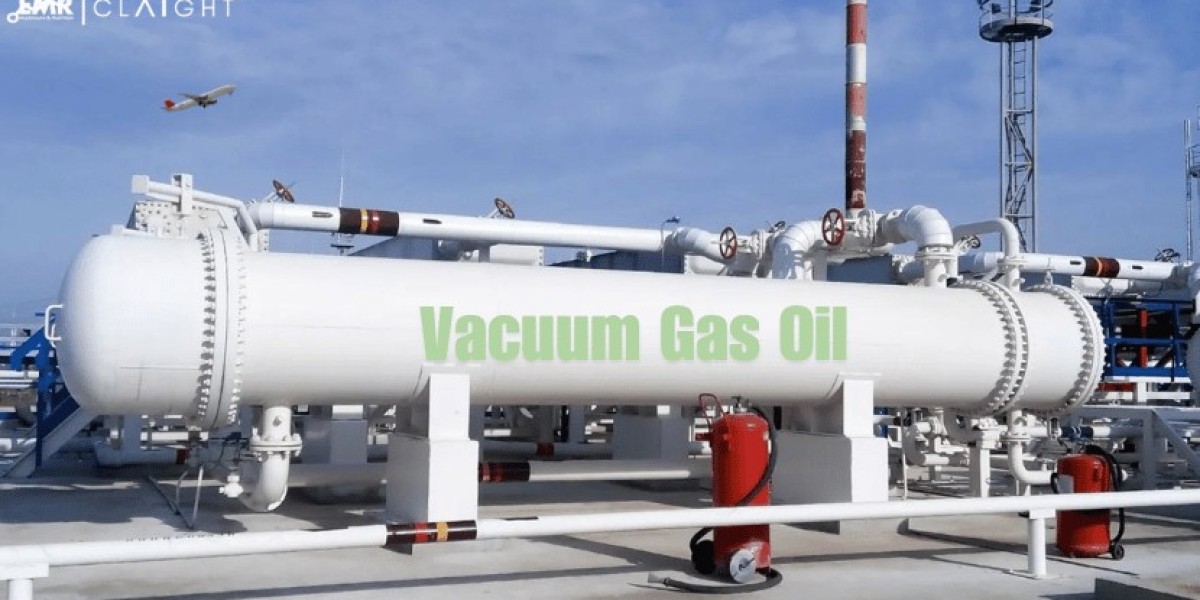Vacuum Gas Oil Market Outlook
According to the report by Expert Market Research (EMR), the global vacuum gas oil (VGO) market reached a value of USD 406.80 billion in 2024. Aided by the rising demand for transportation fuels and the growing complexity of crude oil refining processes, the vacuum gas oil market size is projected to expand at a compound annual growth rate (CAGR) of 5.30% between 2025 and 2034 to attain a value of approximately USD 681.81 billion by 2034.
Vacuum gas oil, commonly referred to as VGO, is a heavy petroleum fraction produced during the vacuum distillation of crude oil. It is typically used as feedstock in catalytic cracking and hydrocracking units in refineries for the production of gasoline, diesel, and other middle distillates. As the global demand for refined petroleum products continues to increase, especially in emerging markets, VGO remains a critical intermediary in modern refinery operations.
Market Size and Share
The global vacuum gas oil market stood at USD 406.80 billion in 2024, with Asia Pacific emerging as the dominant regional market. This growth is primarily attributed to the expanding refining capacities in countries such as China and India, which are investing heavily in upgrading their downstream infrastructure to meet the rising domestic demand for fuels and petrochemicals.
North America follows closely due to the presence of sophisticated refining complexes and access to shale oil, which necessitates efficient upgrading processes involving VGO. Europe, though slower in terms of refining expansion, maintains a significant market share driven by energy diversification strategies and sustained fuel demand.
In terms of product segmentation, VGO is broadly classified into light vacuum gas oil (LVGO) and heavy vacuum gas oil (HVGO). While HVGO holds a larger share due to its wider application in deep conversion units, LVGO is gaining prominence owing to its versatility and efficiency in blending and processing.
Vacuum Gas Oil Market Trends
Several significant trends are shaping the global vacuum gas oil market. One key trend is the transition of refineries toward more complex and integrated configurations. In light of tightening environmental regulations and the shift toward cleaner fuels, refiners are increasingly investing in hydrocracking units and fluid catalytic cracking (FCC) units that utilise VGO to produce high-value products with lower sulphur content.
Another noteworthy trend is the increase in demand for petrochemical feedstocks. With the global plastics and chemicals industries witnessing steady growth, refiners are optimising VGO processing routes to generate olefins and aromatics, which serve as essential inputs in petrochemical manufacturing.
Moreover, the integration of advanced data analytics and digital twin technologies in refinery operations is contributing to the improved efficiency and yield of VGO conversion processes. Digitalisation allows refiners to monitor and control catalytic cracking parameters in real-time, thereby optimising product quality and throughput.
Take advantage of a free, no-obligation sample report - https://www.expertmarketresearch.com/reports/vacuum-gas-oil-market/requestsample
Drivers of Growth
The vacuum gas oil market is being propelled by a host of economic, industrial, and technological factors. Key growth drivers include:
Growing Fuel Demand: As global transportation networks expand and industrialisation accelerates, particularly in developing regions, the demand for gasoline and diesel continues to increase, directly supporting the consumption of VGO as a refining feedstock.
Refinery Upgrades and Expansions: Many refiners are upgrading their facilities to incorporate complex processing units capable of handling heavier crude slates. This trend is boosting the use of VGO in deep conversion units such as hydrocrackers and FCC units.
Petrochemical Sector Growth: The rising global demand for plastics, synthetic rubbers, and other petrochemical products is increasing the requirement for feedstocks derived from VGO.
Regulatory Pressures for Cleaner Fuels: Governments worldwide are mandating reductions in sulphur content and other pollutants in transportation fuels. This is prompting refiners to adopt VGO hydrocracking processes to produce cleaner products.
Energy Security and Strategic Reserves: National strategies aimed at improving energy self-sufficiency are leading to investments in domestic refining capabilities, further driving demand for VGO.
Technology and Advancements
Technological innovation continues to play a pivotal role in the evolution of the VGO market. The advancement of hydrocracking and FCC technologies has enhanced the conversion efficiency of VGO into lighter and cleaner products. New catalyst formulations have enabled better selectivity, stability, and yield, thereby improving the economics of processing VGO.
The development of residue upgrading technologies, such as slurry-phase hydrocracking and ebullated bed reactors, has expanded the potential applications of HVGO and allowed refiners to process heavier crudes with greater flexibility.
Additionally, the deployment of artificial intelligence (AI) and machine learning (ML) tools in refinery operations is streamlining decision-making, predictive maintenance, and process optimisation. These technologies are especially beneficial for monitoring VGO processing units where operational efficiency is critical to profitability.
Vacuum Gas Oil Market Segmentation
The global vacuum gas oil market can be divided based on type, sulphur content, application, and region.
Market Breakup by Type
- Heavy
- Light
Market Breakup by Sulphur Content
- Lower Sulphur Content
- High Sulphur Content
- Others
Market Breakup by Application
- Gasoline Production
- Diesel Oil/Kerosene Production
- Others
Market Breakup by Region
- North America
- Europe
- Asia Pacific
- Latin America
- Middle East and Africa
Competitive Landscape
The EMR report looks into the market shares, plant turnarounds, capacities, investments, and mergers and acquisitions, among other major developments, of the leading companies operating in the global vacuum gas oil market. Some of the major players explored in the report by Expert Market Research are as follows:
- PJSC Lukoil
- Kuwait Petroleum Corporation
- Honeywell International Inc
- Vertex Energy Inc
- Husky Energy Inc.
- Others
Challenges and Opportunities
Despite the positive outlook, the vacuum gas oil market faces several challenges. Volatility in crude oil prices can directly impact VGO supply and cost structures, affecting refinery margins. Moreover, the tightening of environmental regulations, especially in regions such as Europe and North America, poses operational challenges for refineries reliant on older technologies.
The global shift towards renewable energy and electric mobility presents another long-term challenge. As electric vehicle adoption rises and renewable fuels gain traction, the demand for conventional petroleum products, including those derived from VGO, may face gradual decline over the coming decades.
However, opportunities abound in emerging economies where urbanisation, economic growth, and infrastructure development continue to drive fuel and chemical demand. Investments in clean fuel technologies and carbon capture solutions offer a pathway for refiners to modernise VGO processing while aligning with sustainability goals.
Further, the increasing need for feedstocks in the booming petrochemical sector provides a strong incentive for refiners to optimise VGO utilisation. The potential to extract greater value from VGO through advanced conversion technologies represents a significant opportunity for industry players seeking to enhance competitiveness.
Vacuum Gas Oil Market Forecast
The global vacuum gas oil market is expected to witness sustained growth over the forecast period from 2025 to 2034, driven by the ongoing evolution of refining technologies, expanding demand for transportation fuels, and the growing influence of petrochemical applications. With a projected CAGR of 5.30%, the market is anticipated to rise from USD 406.80 billion in 2024 to nearly USD 681.81 billion by 2034.
Regionally, Asia Pacific will likely maintain its leadership position due to ongoing industrialisation and energy demand growth. Meanwhile, North America and the Middle East are expected to benefit from refinery expansions and increasing exports of refined products.
As the global energy landscape continues to transition, the role of vacuum gas oil as a flexible and valuable intermediate feedstock will remain essential in supporting both current fuel demands and the future needs of the petrochemical industry. The market’s growth trajectory reflects the sector’s resilience, adaptability, and enduring importance in the global energy value chain.
Media Contact:
Company Name: Claight Corporation
Email: sales@expertmarketresearch.com
Toll Free Number: +1–415–325–5166 | +44–702–402–5790
Address: C-130 Sector 2 Noida, Uttar Pradesh 201301
Website: https://www.expertmarketresearch.com








